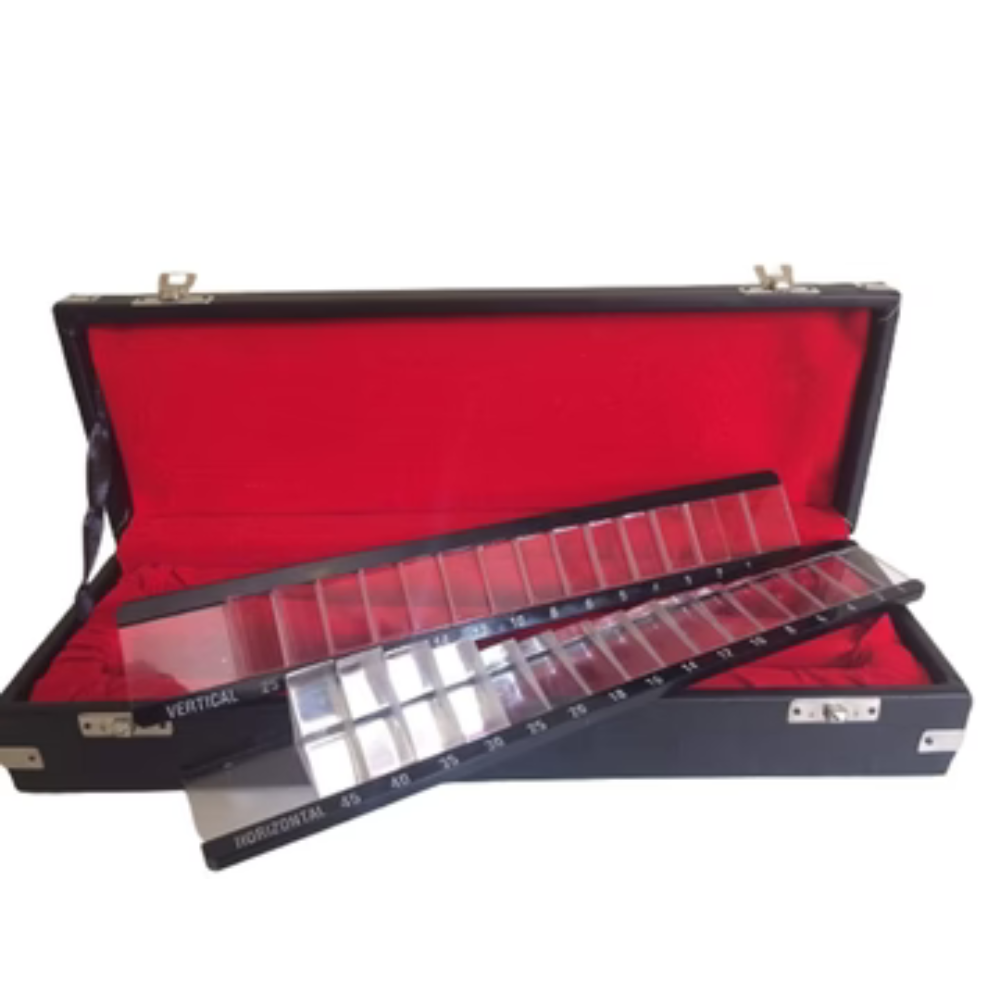1
/
of
1
MEDICO INSTRUMENTS DELHI
PRISM BAR
PRISM BAR
Regular price
Rs. 2,800.00
Regular price
Rs. 3,000.00
Sale price
Rs. 2,800.00
Unit price
/
per
Shipping calculated at checkout.
Couldn't load pickup availability
A Prism Bar is a diagnostic tool used by eye care professionals, such as optometrists and ophthalmologists, to evaluate and measure eye alignment and binocular vision. It is often used to detect and quantify conditions like strabismus (eye misalignment), phorias (latent deviations), and other binocular vision disorders.
Key Features of a Prism Bar:
- Array of Prisms: The prism bar contains a series of prisms arranged in increasing diopter strengths. These prisms bend light, shifting the image seen by the eye and helping to measure the degree of eye deviation.
- Diopter Increments: Each bar usually contains prisms ranging from low diopter values (1 or 2 prism diopters) up to higher values (typically 40 to 50 prism diopters). This range allows precise measurement of even small misalignments.
-
Two Types of Bars:
- Horizontal Prism Bar: Used to measure deviations or misalignments that cause the eyes to drift horizontally (esotropia, exotropia).
- Vertical Prism Bar: Measures vertical deviations (hypertropia, hypotropia).
- Bilateral Measurements: Prism bars allow measurements in both the right and left eye by simply switching the bar’s orientation.
- Lightweight and Durable: Made of plastic or optical-grade materials, prism bars are designed for durability and ease of handling during clinical use.
- Transparent Design: The transparent nature of the prisms allows light to pass through, making it possible to evaluate how the patient's eyes respond to the prisms without blocking their view.
Common Uses:
- Strabismus Diagnosis and Management: Used to measure the degree of eye misalignment in patients with strabismus, both for diagnostic purposes and for determining the strength of corrective prisms in glasses or potential surgical correction.
- Binocular Vision Testing: Helps evaluate how well the eyes are working together and if there’s any strain or misalignment.
- Phoria Testing: Helps diagnose latent deviations in eye alignment that may not be present when both eyes are open but become evident when one eye is covered.
- Post-Surgical Assessments: After strabismus surgery or other treatments, prism bars are used to check the accuracy of the correction and ensure proper alignment.
Share


